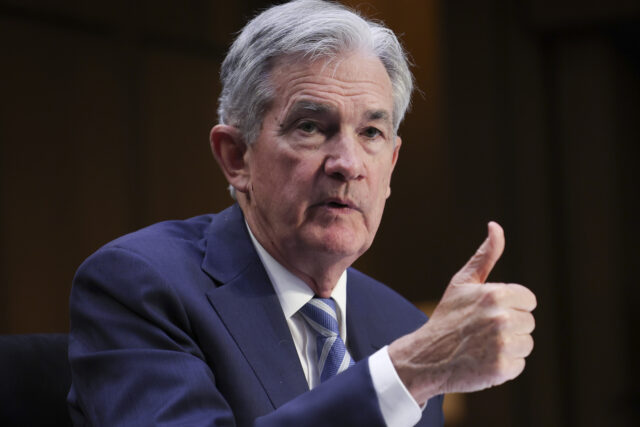Federal Reserve policymakers left the central bank’s benchmark interest rate unchanged despite inflation that has run above its target for over two years, saying the pause would allow it to gauge the effects of earlier hikes on the economy.
The Fed said on Wednesday that it would hold its benchmark rate at a range of five percent to 5.25 percent, the range it set at its May meeting and the highest since the Fed cut rates at the summer of 2007. At the same time, the Fed signaled that it expects to hike at least two more times this year.
In a statement announcing the decision, the Federal Open Market Committee said: ”
“Holding the target range steady at this meeting allows the Committee to assess additional information and its implications for monetary policy. In determining the extent of additional policy firming that may be appropriate to return inflation to 2 percent over time, the Committee will take into account the cumulative tightening of monetary policy, the lags with which monetary policy affects economic activity and inflation, and economic and financial developments.”
The decision was unanimous, with no members of the FOMC dissenting. There had been some speculation that one or more regional Fed presidents would vote against holding rates steady, preferring to continue raising rates.
This is the first time in 15 months that the Fed has not raised the federal funds rate, the overnight inter-bank borrowing rate that the Fed uses in an effort to fulfill its statutory duty to stabilize prices and maximize employment.
Tuesday’s decision to leave interest rates alone came at a time when many Fed officials have expressed concern that inflation is still well above the two percent rate the Fed says it targets and the labor market is extraordinarily tight by almost all measures. Fed Chairman Jerome Powell and others on the Fed board, however, have said in speeches and remarks that the central bank would consider “pausing” rate hikes or “skipping” a hike at the June meeting to give them an opportunity to observe the impact of past hikes on the economy. This has often been accompanied by the idea that the Fed should indicate that it stands ready to resume hiking if inflation continues to run hot.
The Fed’s decision to hold rates was widely expected but economists and markets are divided on what the Fed’s next move will be. Earlier this year, bond markets reflected a view that the Fed would begin to cut rates soon after taking a breather following the last hike. Hawkish speeches from Fed officials and stronger-than-expected economic data have largely quashed that expectation. Now the debate is whether the Fed will resume hikes later this year or extend the pause through subsequent meetings.
A further tightening of rates could push the economy into a recession and provoke critics of Powell on the left and right, many of whom feel the Fed has been too aggressive with rate hikes. On the other hand, a prolonged pause or a move to cut rates could reignite inflation. After dithering for months under the mistaken belief that inflation would be transitory, the Fed is seen as an unreliable economic guide by many.
“Much has been written about why the Fed finds itself in this uncomfortable situation. The most commonly cited reason is that the Fed misjudged the inflation threat for most of 2021 and first quarter of 2022 before being forced into 10 successive rate hikes. As a result, the Fed has experienced a significant erosion of its public standing and policy credibility,” economist Mohamed El-Erian wrote in an opinion piece for the Financial Times this week.
In April, the personal consumption expenditure price index that the Fed uses as the benchmark for its inflation target was up 4.4 percent compared with 12 months prior, more than twice the Fed’s target. Troublingly, that represented a reacceleration of inflation from the month before, when inflation was up 4.2 percent from a year prior. Compared with March, the PCE price index was up 0.4 percent, a big pick-up from the 0.1 percent monthly gain that preceded it.
A summary of economic projections of Fed officials released on Wednesday showed a significant rethinking about the direction of the economy, inflation, and interest rates. The median projection for economic growth jumped to one percent this year, up from four percent in the summary released after the March meeting. The unemployment rate is expected to rise to 4.1 percent, below the March projection of 4.5 percent.
PCE inflation is expected to be 3.2 percent, down from 3.3 percent, but core PCE inflation is forecast at 3.9 percent, up from 3.6 percent.
Most dramatically, the Fed funds rate is now projected as rising to 5.6 percent by the end of the year, up from 5.1 percent.

COMMENTS
Please let us know if you're having issues with commenting.